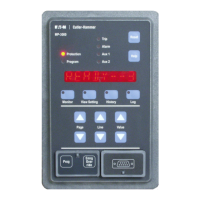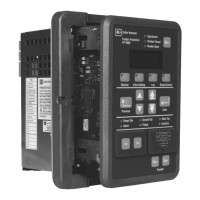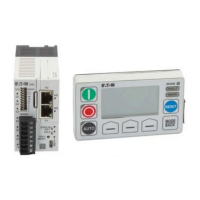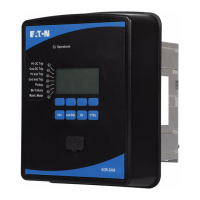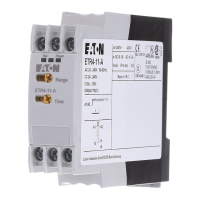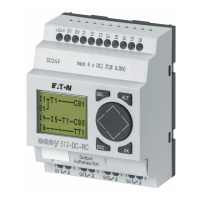IL04915001E
Effective 7/09 6
5. TECHNICAL SPECIFICATION
Terminals
Type Pull-apart
UL/CSA rating 300 V AC, 10 A
VDE rating 250 V AC, 12 A, pollution degree 3, over-voltage
category III
Insulation stripping length 7 mm (0.27 “)
Torque 0.4 - 0.6 Nm (0.295 - 0.443 Ft. lb)
Field wiring 0.5 - 2.5 mm
(VDE), 20 - 14 AWG (UL/CSA), Cu, solid or
stranded
Control power
Voltage range Nominal: 24 – 240 V AC/DC, -20% / +10%
Total: 19.2 – 264 V AC/DC
Frequency range on AC 45 – 450 Hz
Power consumption AC 1.5 VA max, DC 0.5 W
Isolation voltage Not electrically isolated from electronics
Loss of supply tolerance (no impaired
operation)
250 ms at 24 V ac
1 s at 120 V ac
4 s at 230 V ac
80 ms at 24 V dc
350 ms at 48 V dc
750 ms at 110 V dc
Power-up time 500 ms for G/F detection
100 ms for S/C detection
System power
Voltage range (using external CT) Any, providing the power conductors passing through the
CT are insulated for the system voltage and electrical
clearance requirements are met
Current Range Maximum continuous phase current specified for the
C311CT connected to the relay
Frequency range 45 – 450 Hz
Memory after loss of control voltage 1 week minimum (until the memory is read by pressing
the Reset button)
Ground fault circuit
G/F Trip Level (settable) 0.03, 0.10, 0.50, 1, 2, 3, 5, 9 A
Accuracy of trip point -15% / +0% of Trip Level
G/F Trip Delay (settable) 0.02. 0.30, 1, 2, 5, 10 s
Accuracy of trip delay
-2 / +5 ms or ±2.5% of Trip Delay, whichever is greater
2
If a ground fault causing a current above the G/F Trip Level but below the S/C Trip Level is already present
when power is applied, the system trips just as soon as possible, regardless of the G/F Trip Delay setting
(rationale: the fault may have been present much longer than the delay set time and should be cleared without
delay).
3
The accuracy of the trip point refers to the value of the real world ground fault current (assuming a purely
sinusoidal wave shape) that just causes a trip when slowly increased from zero.
4
The ground fault detection mechanism has a ‘thermal’ behaviour for greatly reduced noise sensitivity: the
quoted delays are valid for sinusoidal currents exceeding the setpoint by >10 times; for reduced current
excursions the delay increases as follows:
current = 6 x setpoint: add 3 ms
current = 4 x setpoint: add 8 ms
current = 2 x setpoint: add 20 ms
current = 1.2 x setpoint: add 60 ms
For IEC 60755 ‘pulsating DC’ currents, the delay increases by a further 50 ms maximum.

